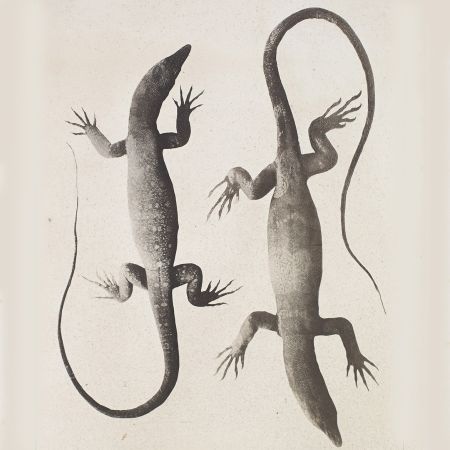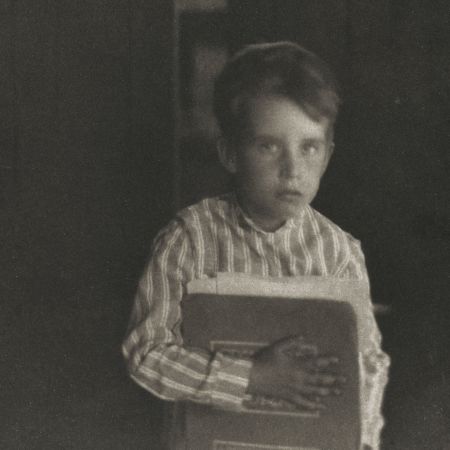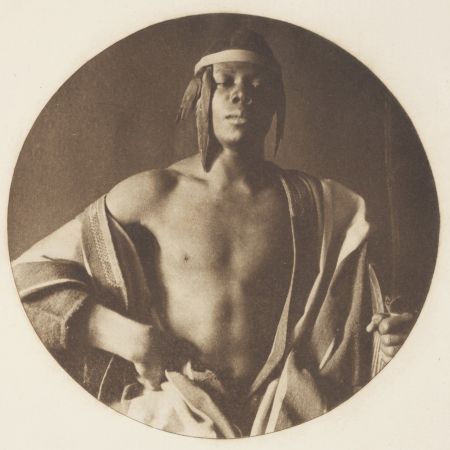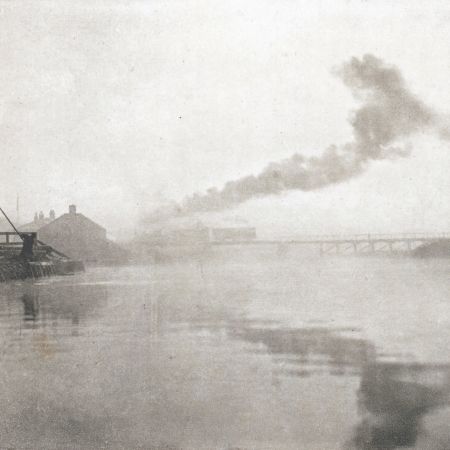Adam Fuss ‘My Ghost’
That christening dress, while spectral-looking and empty, is also startlingly present: A ghost may be made of vague vapors, but it is always experienced viscerally.
British-born photographer Adam Fuss (b. 1961) is best known for his experimentation with early photographic processes in pursuit of metaphoric, ephemeral images. Fuss’s series ‘My Ghost’ embodies his poetic consideration of the ghostly nature of memory and themes of life, death, and transcendence. The series is comprised of daguerreotypes, photograms, photogravures, text, gelatin silver prints, and platinum prints, and includes recurrent motifs of smoke, christening dresses, birds, human bodies, and butterflies.
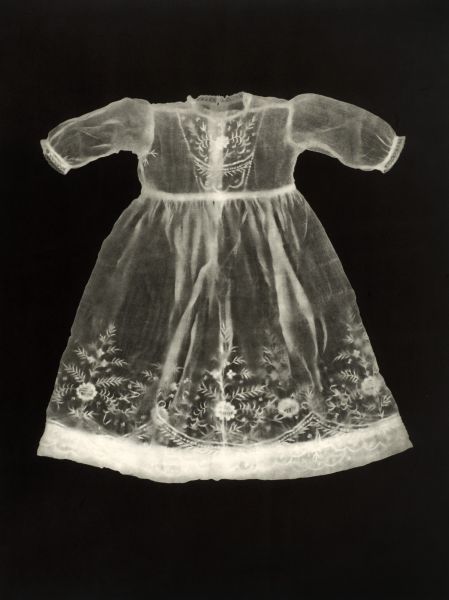
Adam Fuss, ‘My Ghost’, 2003
Fuss states that, “in order for any photographic technique to work, it should be personalized and transfigured into a greater metaphor, engaging processes that take place in the natural world.” Using light and chemistry to explore the outer reaches of vision, Fuss works in daguerreotype and camera-less techniques such as photogram, aiming not to reproduce the seen but to discover the unseen (Timothy Taylor Gallery, London). Exemplifying his experimentation with camera-less technology, Fuss created for this series an extraordinary photogram of a child’s christening dress. Made by placing an actual dress upon photosensitive paper and exposing the paper to light, the photogram evokes a sense of loss and longing.
Taking the image a step further, Fuss achieved and enhanced a vapor-yet-visceral aesthetic by tapping into the syntactic qualities of the photogravure. The deep black ink afforded by the photogravure process offers the ethereal dress a deep abyss from which to lift. The gentle tonal gradation of the highlights provides dimensionality and glow to the fabric, strengthening the visual effect. In this sense, and for this print, Fuss once again hits the nail on the head. His contemporary exploration of spirituality and his creation of the ethereal ‘My Ghost’ is a perfect application of the photogravure syntax.
Printed by Lothar Osterberg in an edition of eight, this photogravure is the largest print in our collection (43 x 31.5 in).

